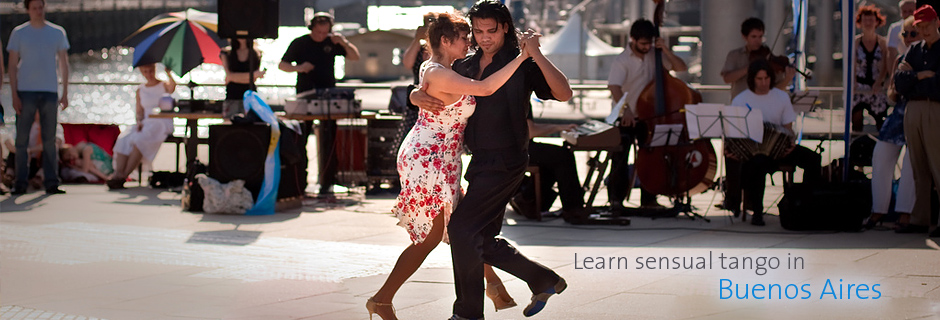
Buenos Aires Travel Guide: Districts
Downtown/City Center
The downtown area of Buenos Aires, unlike most of the city which has been mostly rebuilt and with its oldest buildings only dating back to the 1900’s, is home to the city’s main historical sites since it has retained the city’s original layout. It is here that travelers can see the city’s most famous sights such as the Plaza de Mayo, which has served a vital role in hosting the city’s (and sometimes country’s) most important social and political events; the marble-pillared Cathedral, which was the city’s first church; the Casa Rosada, the official home of Argentina’s president and government headquarters; and of course, the immense obelisk monument that stands as the most recognized symbol of Buenos Aires.
The microcenter, as it is called in Spanish, is also excellent for shopping as the long and bustling Florida Street calls the downtown area home. This pedestrian city is known throughout the city as an ideal location to buy clothes, leather goods and more, at cheap prices.
Palermo
This large residential district of Buenos Aires is famous for its beautiful parks, lovely store boutiques, wide-range of restaurants, happening nightlife and overall trendy and artsy ambience that attracts the city’s young, beautiful and elite crowd. Palermo Soho, the neighborhood within this neighborhood, gives this area its reputation as it is teeming chic boutiques and vintage bars, stylish bars and a unique street life that forever strives to be “alternative”. Bosques de Palermo is the city’s version of New York’s Central Park, so take a stroll and enjoy the sole “green lung” of Buenos Aires. Finally, the sub-neighborhood of Las Cañitas is known for its upscale eateries that feature everything from Greek to Mexican to French cuisine. This well-off area is home to the upper-elite of Argentina’s capital but tourists can come here to enjoy fine dining, drinking and overall tranquility in this more peaceful part of the city.
Recoleta
One of the most posh and expensive areas of this capital city is the very European and well-appointed district of Recoleta. Fin de Siècle French-style villas line the streets of the very sophisticated Avenida Alvear, where the elite of Buenos Aires shop for designer labels and dine at first-class restaurants and cafés, such as Confitería La Biela, the city’s most well-known eatery where Porteño politicians and celebrities frequent.
Alongside the glamour of this affluent neighborhood are some of the city’s most famous attractions, such as Recoleta Cemetery where the city’s privileged are laid to rest next to the likes of arguably Argentina’s most famous figure, Eva Peron. Another important site nearby is the architecturally European Iglesia del Pilar, that during weekends, features an excellent artisan market. Arguably the best museum in all Buenos Aires, Museo Nacional de Bellas Artes, is also situated in this wealthy district and worthy of a visit thanks to its extensive collection of not only Argentine but also European art.
San Telmo
The oldest neighborhood of the city, San Telmo features cobblestone streets and gorgeous colonial buildings that have been exceptionally well-preserved considering how fast Buenos Aires is modernizing. Aside from its historic charm, travelers to the city of “Fine Airs” will be attracted to this district to visit the second oldest plaza of the city, Plaza Dorrego. This main square also features a popular Sunday Market that sells everything from paintings to antiques to furniture.
This barrio (neighborhood) is also known as the tourist Tango Center of the city; Visitors can catch spontaneous Tango shows during the evening on Plaza Dorrego or take in a Tango dinner-and-show at one of the many venues offered in this area.
La Boca
Known throughout the football World as the neighborhood that bore legendary Diego Maradona and the famous Boca Junior football club, this working class district is figuratively and literally one of the most colorful places in the city. While it may be bit more dangerous than other areas, it is definitely worth the visit for travelers looking to get a glimpse at the other side of Buenos Aires.
Here visitors can see the famous football stadium La Bombanera that seats up to 60,000 lively Boca Junior fans and where games are a spectacle not to be missed. Caminito Street is the dynamic pedestrian street where tourists can purchase handicrafts or watch Tango dancers perform with brighty-colored houses as the backdrop to this unique part of town. Heavily influenced by the Italian immigrants who landed here decades ago, La Boca has a distinct zest that is not replicated anywhere else in the city.
We do have the lowest prices. We will meet or beat any internet published rates from companies outside Argentina
for
all package tours. All HOTELS and TOURS are based on US standards. No late booking fees.
We have the best testimonials. Our professional and expert staff is at your service and will reply to any request
within 24 hours. While traveling in Argentina you will have access to our local 24/7 emergency number.

